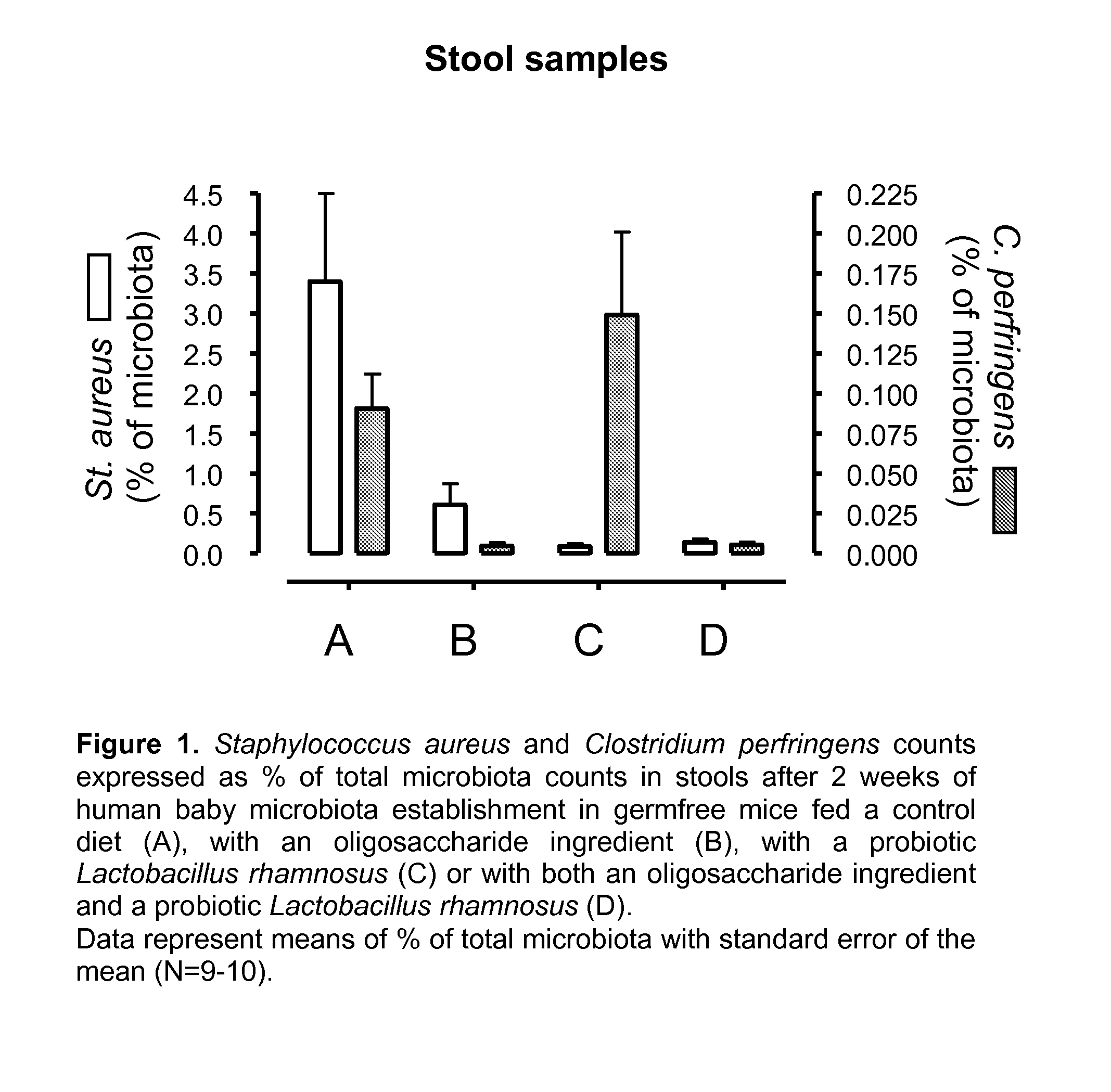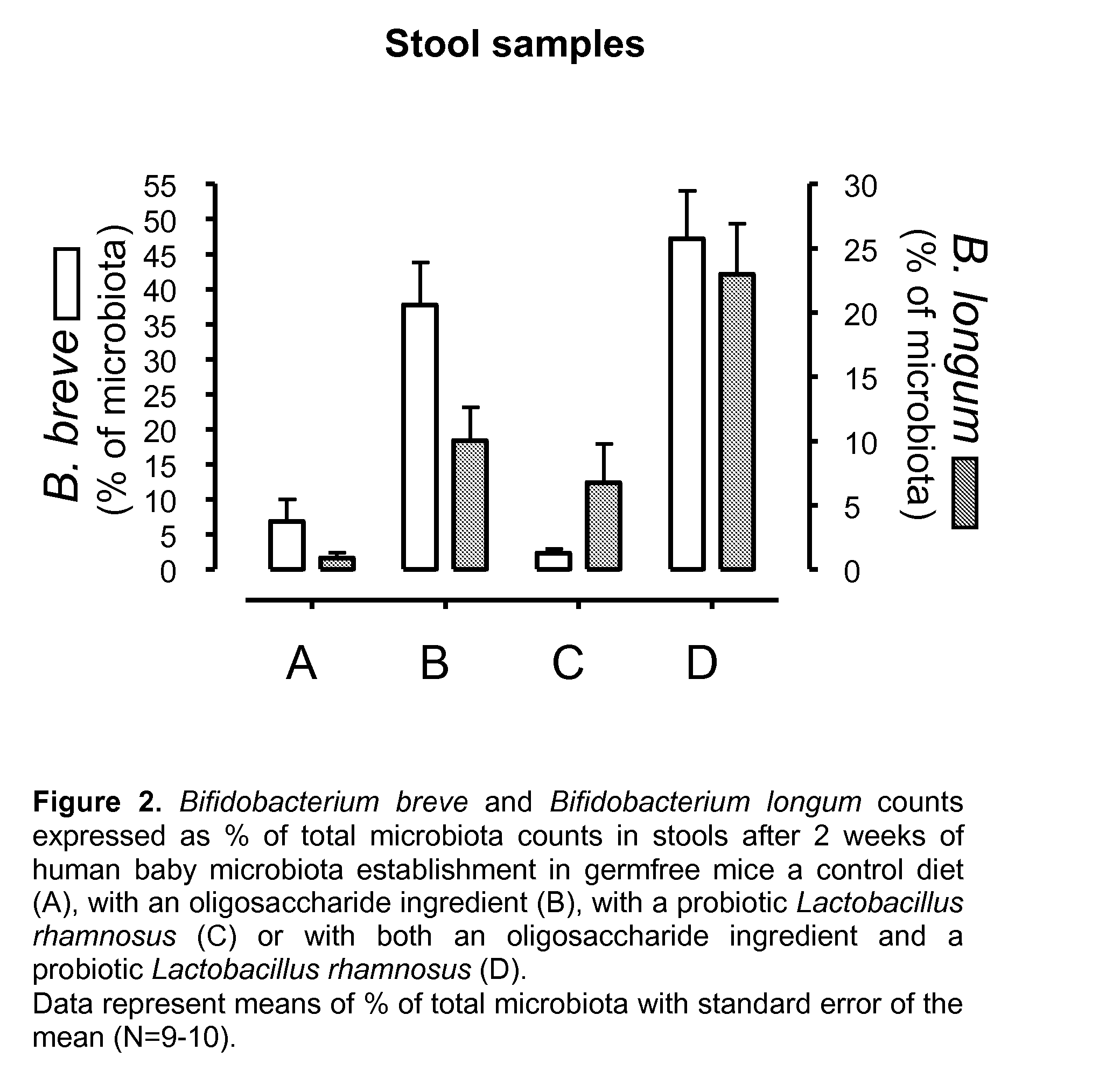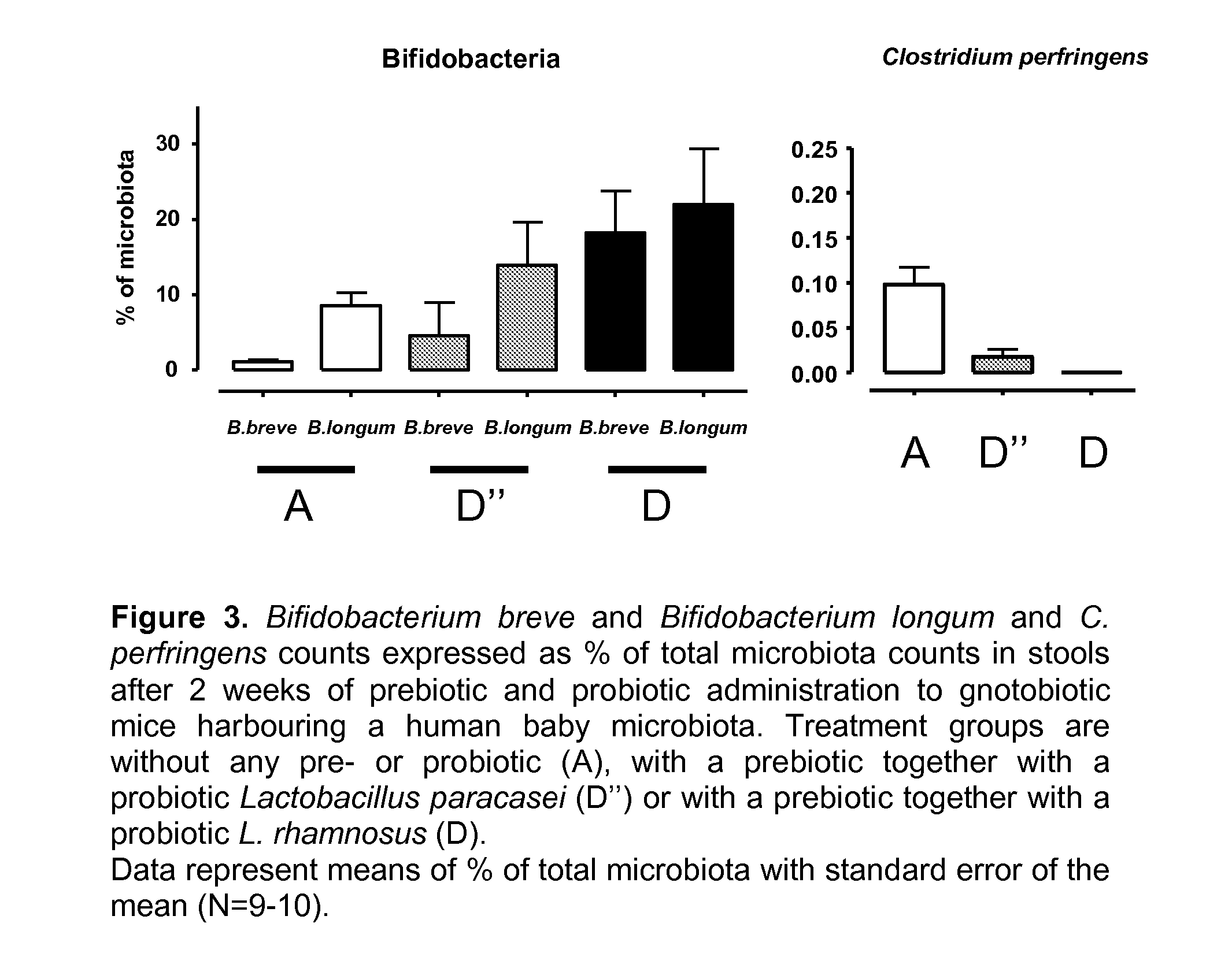Synbiotic to improve gut microbiota
a gut microbiota and synbiotic technology, applied in the field of synbiotic to improve gut microbiota, can solve the problems of insufficient or unsuccessful breast feeding, reduce the risk of subsequent development, promote colonisation, and reduce the risk of diarrhoea episodes
- Summary
- Abstract
- Description
- Claims
- Application Information
AI Technical Summary
Benefits of technology
Problems solved by technology
Method used
Image
Examples
example 1
[0058]An example of the composition of a suitable infant formula to be used in the present invention is given below
Nutrientper 100 kcalper litreEnergy (kcal)100670Protein (g)1.8312.3Fat (g)5.335.7Linoleic acid (g)0.795.3α-Linolenic acid (mg)101675Lactose (g)11.274.7Minerals (g)0.372.5Na (mg)23150K (mg)89590Cl (mg)64430Ca (mg)62410P (mg)31210Mg (mg)750Mn (μg)850Se (μg)213Vitamin A (μg RE)105700Vitamin D (μg)1.510Vitamin E (mg TE)0.85.4Vitamin K1 (μg)854Vitamin C (mg)1067Vitamin B1 (mg)0.070.47Vitamin B2 (mg)0.151.0Niacin (mg)16.7Vitamin B6 (mg)0.0750.50Folic acid (μg)960Pantothenic acid (mg)0.453Vitamin B12 (μg)0.32Biotin (μg)2.215Choline (mg)1067Fe (mg)1.28I (μg)15100Cu (mg)0.060.4Zn (mg)0.755L. rhamnosus ATCC 531032.107 cfu / g of powder, live bacteria
example 2
[0059]This example compares the effect of Lactobacillus rhamnosus CGMCC 1.3724 with an oligosaccharide ingredient including N-acetylated oligosaccharides, neutral oligosaccharides and sialylated oligosaccharides (referred to hereinafter as CMOS-GOS) on the establishment of an early bifidogenic intestinal microbiota in a gnotobiotic mouse model of caesarean delivery with the effect of the probiotic and oligosaccharide mixture alone and with a control. This model is an appropriate animal model of infants born by caesarean delivery and having a sub-optimal intestinal microbiota in terms of population of Bifidobacteria. In addition to the observation of the size of Bifidobacteria population, this model is also suitable to follow the beneficial effect of the Bifidobacteria as a barrier against potentially pathogenic bacteria like Clostridium perfringens.
PUM
 Login to View More
Login to View More Abstract
Description
Claims
Application Information
 Login to View More
Login to View More - R&D
- Intellectual Property
- Life Sciences
- Materials
- Tech Scout
- Unparalleled Data Quality
- Higher Quality Content
- 60% Fewer Hallucinations
Browse by: Latest US Patents, China's latest patents, Technical Efficacy Thesaurus, Application Domain, Technology Topic, Popular Technical Reports.
© 2025 PatSnap. All rights reserved.Legal|Privacy policy|Modern Slavery Act Transparency Statement|Sitemap|About US| Contact US: help@patsnap.com



